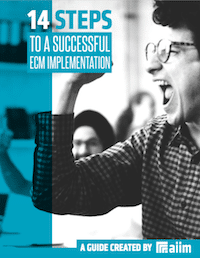The AIIM Blog
Keep your finger on the pulse of Intelligent Information Management with industry news, trends, and best practices.
As a developer venturing into the world of imaging technology, understanding industry standards is crucial. The TWAIN Working Group has been at the forefront of creating and maintaining these standards for nearly three decades. Here's what you need to know about TWAIN and its importance in modern software development.
Share
Capture and Imaging | Intelligent Document Processing | PDF
The PDF format has been a staple for document sharing for decades, but its reliance on older image formats like JPEG, PNG-like compression and JPEG-2000 is starting to show its age. A recent white paper highlights the advantages of incorporating JPEG-XL into the ISO PDF standard and PDF/Raster, bringing several key benefits to the format. Here’s why this matters:
Share

Making an ECM implementation successful requires planning and attention to detail. The best way to create the right solution is to identify organizational goals and priorities. Learn how to manage a successful implementation in our free guide.
As an Information Leader, selecting the right imaging technology for your organization is a critical decision that impacts information flow, accessibility, and management. With the rapid evolution of cloud and mobile technologies, it's crucial to choose solutions that are not only effective today but also future-proof. The TWAIN Working Group standards, particularly TWAIN Direct, offer a framework for making informed decisions. Here's what you need to consider when selecting imaging technology with TWAIN standards in mind.
Share
As an advocate for advanced imaging technologies and standards, I'm often asked why information management practitioners should care about imaging standards like those developed by the TWAIN Working Group. The answer is simple yet profound: these standards are crucial for efficient, accurate, and secure information acquisition and management.
Share
Capture and Imaging | Intelligent Information Management (IIM)
As the Chairman of the TWAIN Working Group Board of Directors and the portfolio marketing manager with Kodak Alaris, I've seen firsthand how standardization can revolutionize an industry. In this post, I want to share why standardization, particularly in imaging technology, is crucial for businesses and consumers alike.
Share
If you’ve been paying attention to the research we conduct and the educational information we share, you know that AIIM describes Intelligent Information Management (IIM) as all the things you want to do with, or get from, your organization’s information. We break these up into five key categories of actions or aspirations: Creating and Capturing Information Extracting Intelligence from Information Digitalizing Core Business Processes Automating Governance and Compliance Implementing an Information Management Solution
Share